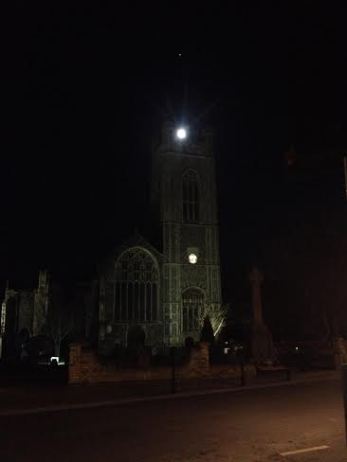Around ten days ago, I was idly pondering some of the features in the Stonehenge landscape when some ‘thing’ quietly called out for my attention. This is a sensation I long ago grew accustomed to, but despite the fact that I recognised that a faint voice was trying to be heard and I listened carefully and calmly as a result, all I could ascertain was that it was something to do with the Avenue at Stonehenge.
Since then, I’ve allowed the thought to ferment, if that’s the right expression, so it may be that I might have something original to say about this ancient structure soon, although I won’t know until I publish my post whether or not someone’s observed it before, or if indeed it has any value. Nonetheless, it’s always exciting when these things happen, when a few otherwise meaningless and unconnected dots come together in a pattern that suggests the existence of something new and previously unremarked-upon.
I’ve been studying Stonehenge for a long time and I don’t suppose that I will ever grow bored with contemplating the ruins, or with trying to find something in the landscape that will allow me a glimpse into the distant past through the eyes of those who once worshipped and performed their ceremonies there. A few days ago, I noticed an exchange online wherein some newcomer was asking questions about the place, to receive the learned reply that the only things of any real value to be learned or discovered about Stonehenge will come about through archaeology and anthropology.
As archaeology is the study of things created by humans in the past and as anthropology is the scientific study of mankind, the expert in question would appear at first glance to be casting his net extremely widely. However, anyone with even a passing acquaintance with these matters will be aware that science holds numerous fields of study in contempt, to put it politely; one that has an obvious connection to Stonehenge is astrology and it’s inconceivable to me that this wasn’t practised at Stonehenge in former times.
Another is the subject of dogs, or black dogs, something that we explored in some depth on Eternal Idol, bearing in mind the creature that was discovered buried by the shrine at the Cuckoo Stone; also the appearance of a black dog in an Arthurian tale about a Perilous Chapel that I’m certain was a clear memory of Stonehenge in its active use in prehistory.
I’ve written little if anything about British black dogs here, but they’ve been occupying my mind more and more in recent times. I’ve encountered three of them over the last twenty-five years or so, I know of other people who’ve also seen them and I’ve read as much about them as I can lay my hands on. They seem to me to be an elemental aspect of the British countryside and while I do not know how long these strange phantoms have been wandering carefully-defined paths around our islands, they are to me a subject that stirs the blood.
And so it is that I’m extremely grateful to Hannah Gardiner, an accomplished and insightful researcher and bibliophile who is fortunate enough to live in Bungay in Suffolk, for sending in the photographs she took last night of a waxing gibbous moon through the spires of St Mary’s Church.
This particular phase of the moon is frequently mentioned in H.P. Lovecraft’s menacing, enchanting stories, so that alone gives this celestial apparition a great allure for me, but when a gibbous moon falls in conjunction with the spires of a church wherein Black Shuck slew two hapless members of the congregation on August 4th, 1577, my mind starts reeling, my pulse starts racing and I feel like Byron on the Acropolis.
“All down the church in midst of fire, the hellish monster flew, and, passing onward to the quire, he many people slew.”
My grateful thanks once again to Hannah Gardiner for the evocative photos of St Mary’s Church, Bungay.




People once seemed to be seeing black dogs all over the place in Britain, now it is large black cats.
LikeLiked by 1 person
I understand what you’re saying, but I don’t believe it’s completely true. For some reason, there’s been a cultural shift and people are happy to report these large cats, which undoubtedly exist, because they’ve got it into their minds that it’s not only exciting, but acceptable to see these strange creatures.
To my way of thinking, Black Dogs are much like fairies inasmuch as few people will admit to seeing them, but I know they’re still very much around, if only because I’ve encountered three myself and touched one. I’m not going to give details of the location, because people understandably want it kept quiet, but someone I know extremely well – a retired school teacher who’s as sane and as wordly-wise as they come – saw a Black Dog there a few years ago and I have no reason to disbelieve her.
It was a Sunday morning, very early, and she saw an outsize black dog outside a neighbour’s house, on the corner at the foot of a hill. She wasn’t immediately concerned, because it was patently a three dimensional creature of flesh and blood, so she assumed it had got loose from somewhere. However, she quickly realised it was very badly ‘wrong’ because its head was far too large and shaped like that of an alligator.
It didn’t offer her any harm, but loped off down the hill and disappeared into a shady lane that I travelled to and visited many times later. I’ve been to a lot of frightening places over the decades and managed to stand my ground for most of the time, but this place put the Fear of God into me and I often found it physically impossible to remain there for more than a minute or so.
Black Shuck and his cousins ride again, of that I’m certain.
LikeLike